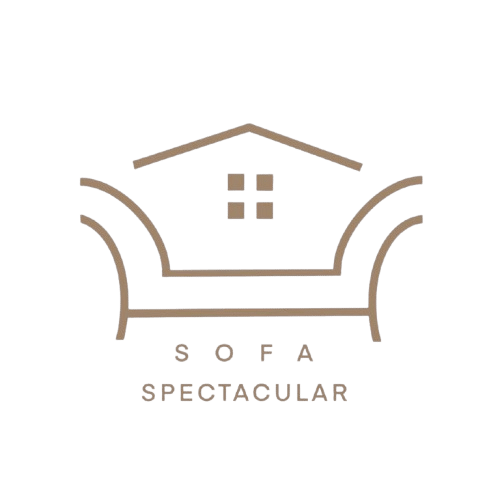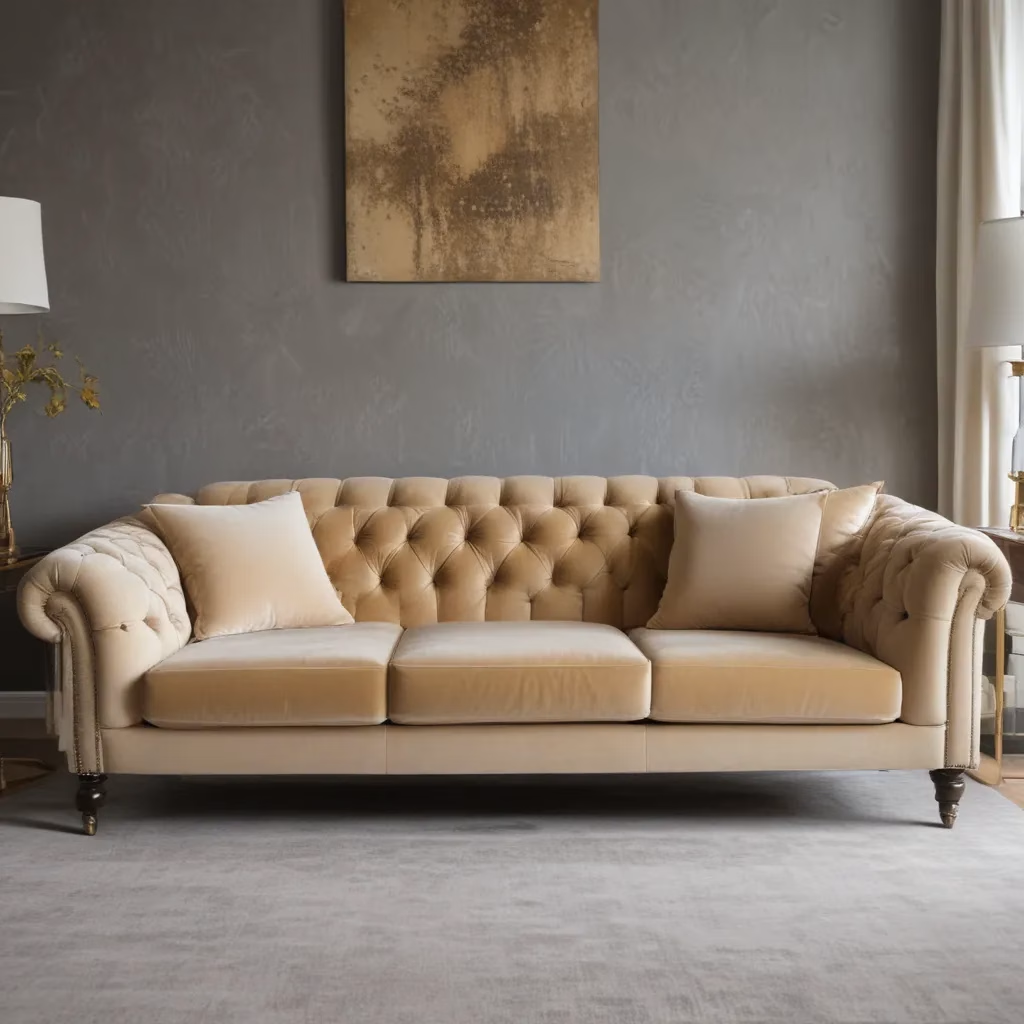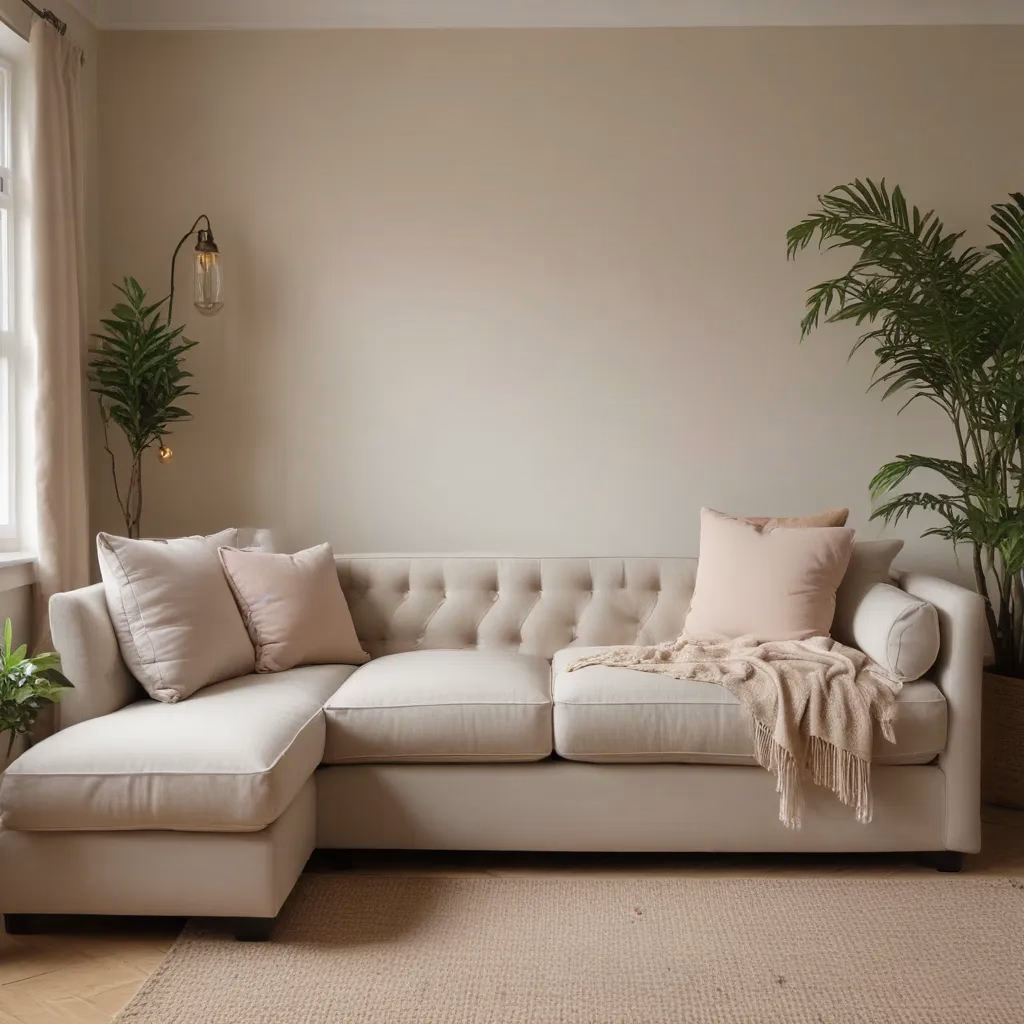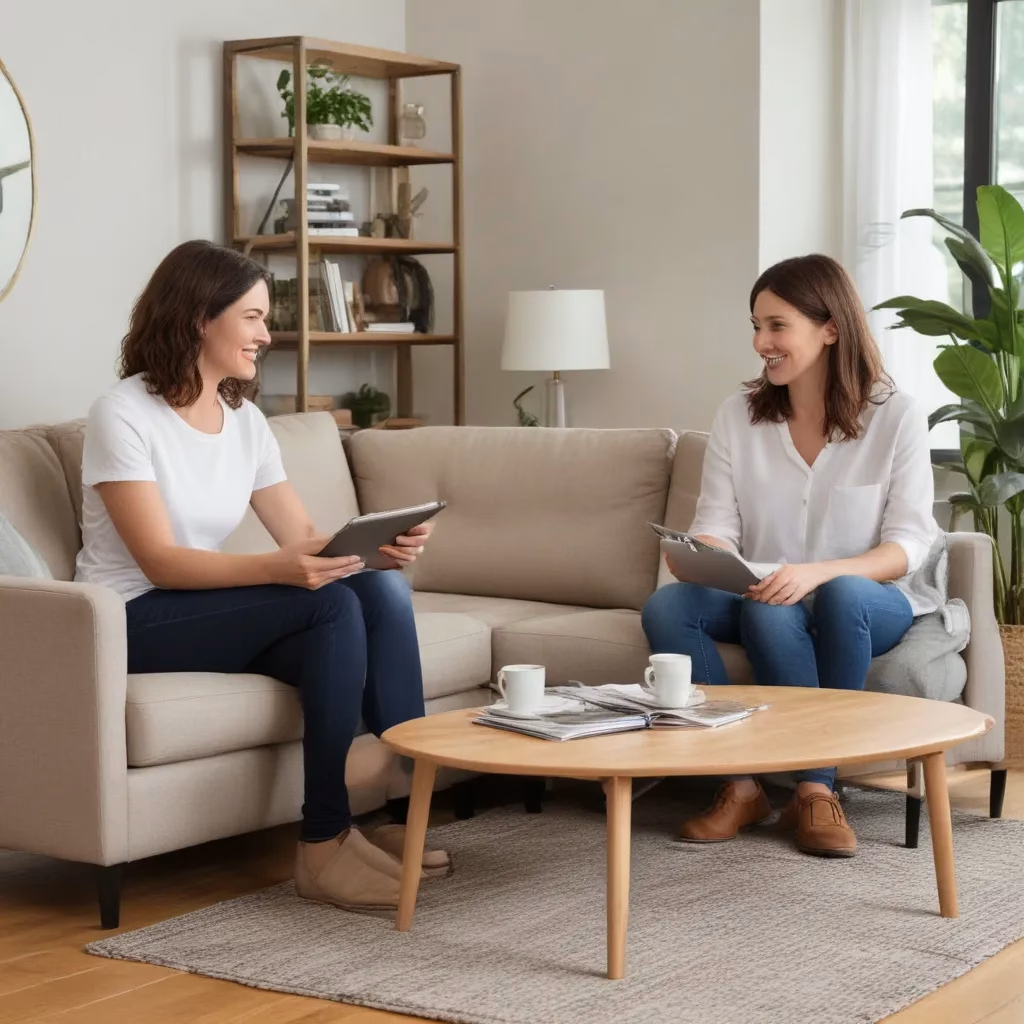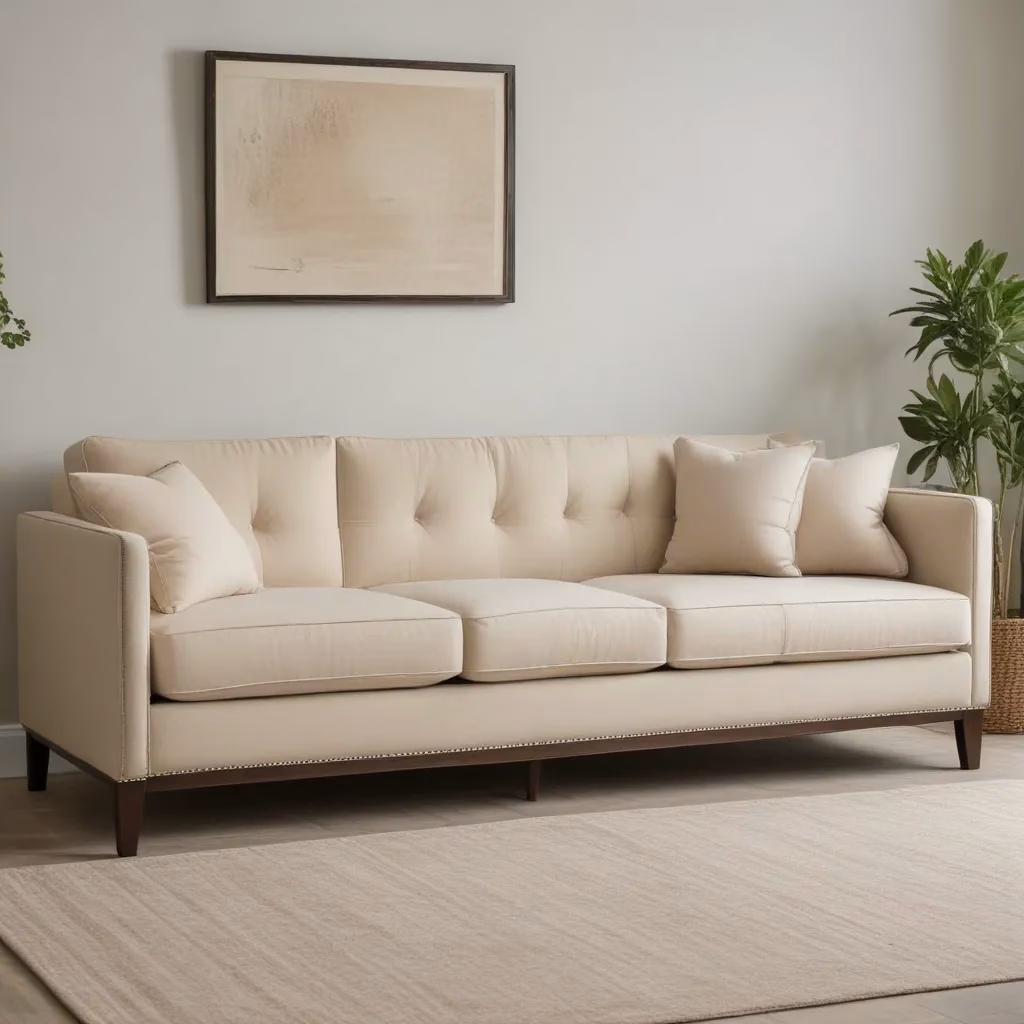
Shopping for a new sofa can be an exciting yet overwhelming experience. After all, a high-quality sofa is often a significant investment for your home and needs to withstand daily use for many years. To make an informed purchase, it’s critical to understand the construction, materials, and durability factors that contribute to a sofa’s longevity.
Now, this might seem counterintuitive…
Sofa Frame Construction
The frame of a sofa is the foundation that supports the entire piece. A well-built frame is essential for ensuring the sofa’s stability, comfort, and long-term performance. When evaluating sofa frames, here are the key elements to consider:
Hardwood Construction: The best sofas are crafted with solid hardwood frames, such as oak, maple, or birch. These dense, kiln-dried woods provide superior strength and durability compared to softer woods or composite materials like particleboard or MDF. Look for frames that are reinforced at the joints with blocking, dowels, or mortise-and-tenon joinery.
Corner Blocking: Quality sofas will have solid wood or plywood corner blocks that are glued and screwed into the frame. This bracing adds stability and prevents the frame from racking or twisting over time.
Suspension System: The suspension system, which includes the springs or webbing that support the seat cushions, is another crucial element of the frame construction. Well-made sofas often feature an “eight-way hand-tied” spring system, where each spring is individually tied to provide even weight distribution and long-lasting comfort.
Leg Attachment: Sturdy, well-attached legs are essential for keeping a sofa stable and level. Look for legs that are securely fastened to the frame using screws, bolts, or other reinforced connections rather than just glue or nails.
Sofa Durability and Lifespan
Beyond the frame, the overall construction and materials used in a sofa will determine its durability and longevity. Consider the following factors when assessing a sofa’s potential lifespan:
Upholstery Fabric: The fabric choice plays a significant role in how well the sofa will hold up to regular use and wear. Look for tightly woven, high-performance fabrics like leather, microfiber, or stain-resistant polyester blends that can withstand frequent use, spills, and cleaning. Avoid delicate fabrics like linen or silk for high-traffic areas.
Cushion Cores: Quality sofas often feature high-density foam or down-filled cushions that maintain their shape and support over time. Avoid inferior cushion materials like loose fiberfill or shredded foam, which can flatten and lose their plushness.
Seam Quality: Well-constructed sofas will have neat, tight seams that remain intact even with repeated use. Look for reinforced stitching, welted edges, and proper fabric alignment along the sofa’s silhouette.
Overall Construction: Carefully inspect the sofa for signs of quality craftsmanship, such as sturdy hardware, smooth-gliding drawers, and tight-fitting upholstery. Avoid sofas with visible gaps, loose joints, or uneven finishes, as these issues can worsen over time.
Fabric and Upholstery Selection
Your choice of upholstery fabric is crucial not just for the sofa’s appearance but also its durability and ease of maintenance. When selecting fabrics, consider the following:
Fabric Types: There are several common upholstery fabric options, each with its own advantages:
– Leather is a luxurious, long-lasting choice that develops a beautiful patina over time. It’s highly durable but can be more expensive.
– Microfiber and performance fabrics like Crypton or Sunbrella are stain-resistant, easy to clean, and suitable for households with pets or children.
– Natural fabrics like cotton, linen, or wool offer a softer, more traditional feel but may require more care.
Fabric Durability: Look for fabrics with a high double-rub count (the number of times a fabric can be rubbed without showing wear). A count of 20,000 or higher is considered highly durable for heavy-use areas.
Customizing Fabric: Many sofa brands offer a wide range of fabrics, patterns, and colors, allowing you to customise the look to suit your personal style and interior. Don’t be afraid to order fabric swatches to double-check that the perfect color and texture match.
Living Room Layout Tips
Once you’ve selected your new sofa, consider how it will fit into your living room layout and coordinate with the surrounding decor. Here are some tips to keep in mind:
Sofa Placement: Position your sofa to encourage conversation and facilitate traffic flow. Arrange it facing a focal point, such as a fireplace or TV, with enough clearance for people to move around it easily.
Coordinating Decor: Choose complementary accent pieces, like coffee tables, end tables, and area rugs, to create a cohesive look. Incorporate pillows, throws, and other textiles to add layers of texture and visual interest.
Creating Cozy Seating: Arrange additional seating, such as armchairs or loveseats, around the sofa to form a cozy conversational grouping. If space allows, consider adding a chaise or ottoman to provide additional lounging options.
Sofa Cleaning and Maintenance
Proper care and maintenance are essential for keeping your sofa looking its best and extending its lifespan. Establish a regular cleaning routine and address any spills or stains promptly to prevent them from setting in.
Routine Upholstery Care: Vacuum the sofa regularly to remove dirt and debris. Use a soft-bristle brush attachment to gently clean the fabric, being mindful of any tufting or decorative details. Fluff and rotate the cushions to double-check that even wear.
Spot Cleaning: Blot any spills immediately with a clean, absorbent cloth. Consult the manufacturer’s instructions for the appropriate cleaning solution and techniques based on the fabric type. Avoid over-wetting the upholstery, as this can lead to water damage or mold growth.
Prolonging Lifespan: Protect your sofa from direct sunlight, which can cause fabrics to fade over time. Consider using slipcovers or throws to shield high-traffic areas and prevent excessive wear. Rearrange the cushions and rotate their positions periodically to distribute the use evenly.
Styling for Comfort and Aesthetics
When selecting a new sofa, it’s important to strike a balance between form and function, ensuring that your investment not only looks beautiful but also provides the comfort and support you desire.
Ergonomic Design: Look for sofas with features that promote proper posture and overall relaxation, such as:
– Generous seat depth and height for optimal support
– Soft, yet supportive cushions that conform to the body’s contours
– Sufficient back and arm support to prevent fatigue during long sitting sessions
Accessorizing for Comfort: Incorporate plush pillows and cozy throws to enhance the sofa’s inviting ambiance and add an extra layer of comfort. Experiment with different pillow arrangements and textures to find the perfect balance.
Balancing Aesthetics: Choose a sofa that complements your existing decor style, whether it’s contemporary, traditional, or somewhere in between. Consider the sofa’s scale, shape, and overall visual impact to double-check that it integrates seamlessly into your living room design.
By considering the sofa’s construction, durability, fabric selection, and overall integration into your living space, you can make an informed purchase that will provide years of comfort, style, and enjoyment in your home. For even more expert advice and inspiration, be sure to visit SofaSpectacular.co.uk, your one-stop-shop for high-quality sofas and living room decor solutions.
Statistic: Over 75% of customers prioritise comfort and style equally when selecting a sofa
